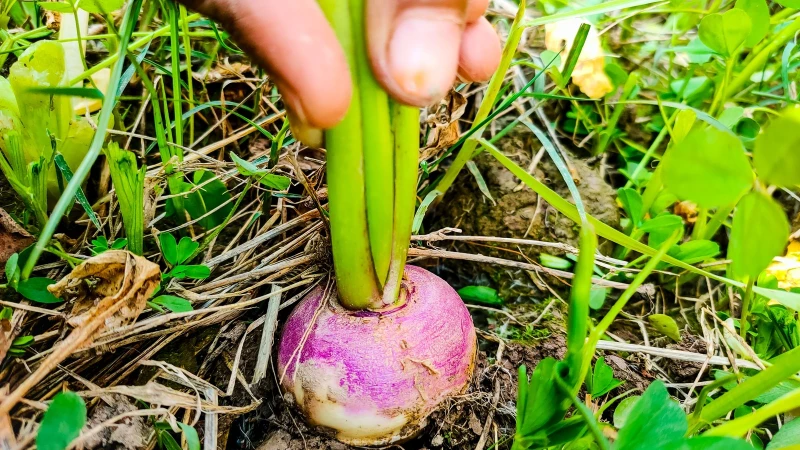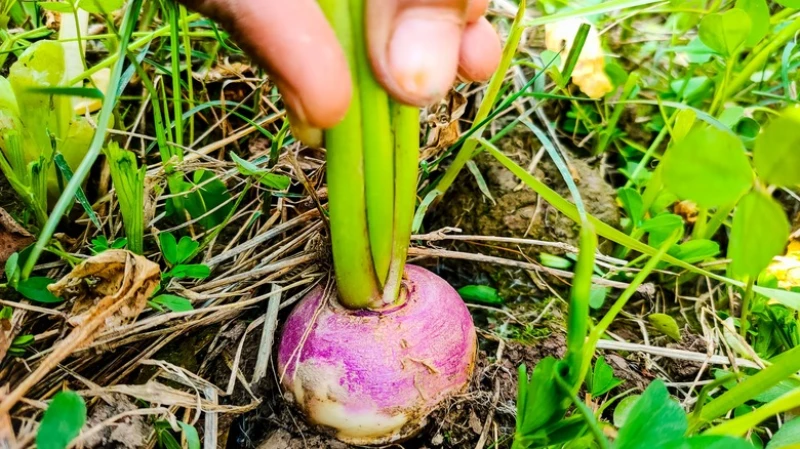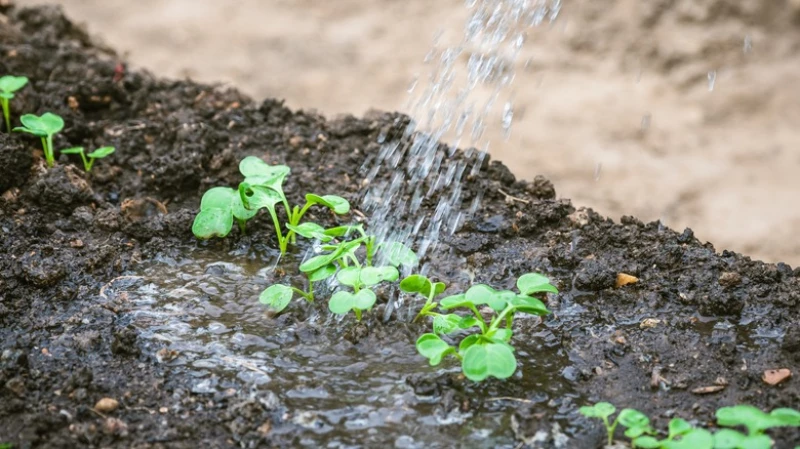Are you a fan of the tangy taste of fresh turnips? If so, why not try growing them in your own garden? It's a cost-effective way to ensure a steady supply of this delicious root vegetable. While turnips are generally easy to grow, there are a few factors to consider in order to maximize their development and avoid common mistakes.
Depending on the variety, turnips can be ready for harvest within a month or two of planting. If you're starting from seed, it may take around 40 days for a true turnip to form. Once the leaves reach a height of approximately 6 inches, it's time to harvest. At this point, you should be able to pull up a larger-sized root or bulb from the ground. A healthy turnip will have white flesh.
In some situations, the bulb may develop but may be more fibrous than desired. Other times, you may have limited growth at all. They can also grow large but lack flavor or be too tough to cook. All of these concerns shouldn't deter you from trying again, though. In many areas, completing a second planting of turnips in your garden may be possible. Before you do that, make sure you're not making one of these common mistakes that could be limiting your turnips from producing bulbs.
Make sure the soil has the right nutrient composition
Turnips are not difficult to grow if you create a healthy environment for them. This starts with the soil composition. These root vegetables do best in soil that's slightly acidic with a pH level of between 6 and 7.5. If you're not getting much growth at all from the plants, you may need to use a 10-10-10 fertilizer to help support better development.
If you have a significant amount of foliage growing, but the bulb itself is small or nonexistent, that could be a sign that there's too much nitrogen in the soil. That's good if you're growing turnips for the greens, but if you're after a nice turnip for salads or pickling, too much nitrogen can be problematic. This can happen if you've added a lot of fertilizer to the soil at the start of the year, organic or not. The best way to fix this problem is to give it time since water will reduce the levels present, reducing the risk for the next planting (either next fall or spring, depending on the time of the year).
Another common problem is not watering turnips enough. Most root-based plants don't do well when there's too much water, but turnips need it. They tend to be very thirsty plants that like the soil to be kept highly moist or even wet most of the time. If the soil dries out, especially for a significant period, that will make it much less likely for the turnip to develop. Drought conditions are not likely to lead to significant tubular growth at all. If your turnip is more woody and has a bitter taste, that's because it lacks enough water throughout the growing period.
To ensure successful growth, it is important to provide turnips with adequate water. Aim to provide at least 1 inch of water per week and keep the soil consistently moist. When watering, do so slowly and steadily for a few minutes to allow the water to penetrate into the loose soil and reach the roots. This will stimulate root growth. If you are unsure if you have watered enough, dig into the ground nearby to check the depth of water penetration. It should reach several inches into the soil. Keep in mind that turnips thrive in areas with full sun or part shade, which can cause the soil to dry out quickly. If the soil remains dry for more than a day or so, the bulbs may be at risk.
Give them the right start at the right time
Timing is crucial when it comes to growing turnips. Avoid attempting to grow them during the summer months as they do not tolerate heat well. Instead, consider planting them in early spring or in the fall, towards the end of summer, depending on the last frost date in your area. Turnips thrive in cooler soil conditions and struggle in hot soil. If you notice a plant that has gone to seed but did not produce a substantial bulb, it is likely due to the soil being too hot.
The Best Time to Plant Turnips
If you want to maximize your turnip harvest, it's important to plant them at the right time. To ensure success, plant turnips a few weeks before the last expected frost date. At this point, the soil should be loose but still cool. This will provide the ideal conditions for turnip growth.
As the plant begins to grow and temperatures increase towards summer, it is recommended to place a loose layer of leaves or light mulch just below the foliage. This will create a small amount of shade, protecting the soil temperature and moisture levels.
When the cool fall air arrives, it is beneficial to till the soil well. This will release any trapped heat and prepare the soil for another round of turnip planting. The lower temperatures of the fall season make it easier for turnips to grow, and proper soil aeration can encourage healthy root development well into the fall.
Overall, turnips are the perfect addition to any fall vegetable garden. By planting them at the right time and providing the necessary care, you can enjoy a bountiful harvest of this versatile and nutritious vegetable.









